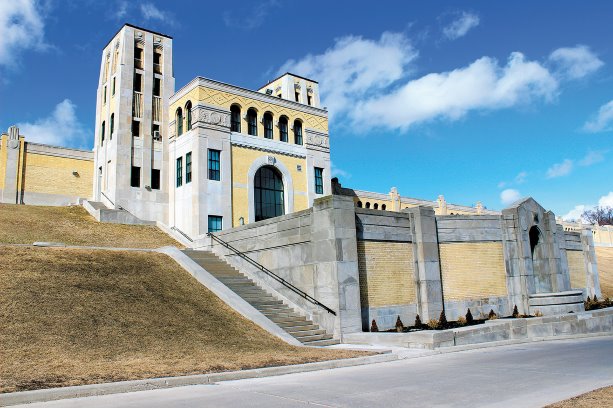A major rehabilitation of the below ground settling basins of two landmark and long-serving Toronto water facilities will get underway this fall.
The facilities include the R.C. Harris Water Treatment Plant in the east end of the city and the St. Clair Reservoir in the central core. Included in the schedule of work is a full waterproofing of the roofs, plus architectural and concrete repairs with some mechanical system replacements.
A number of contractors have been prequalified and award winners will be announced soon. Although there will be separate contracts, Associated Engineering is the consultant for both projects.
Identified in the city’s 2015-2024 capital works program, the projects have a combined value of just under $50 million.
Producing 34 per cent of Toronto’s water supply, R.C. Harris is the second oldest of the city’s four water treatment plants. Construction began in the early 1930s, with the plant becoming operational in 1941. It was declared a national historic civil engineering site in 1992 and designated under Ontario Heritage Act in 1998.
Measuring 300 metres long by 100 metres wide, (984 feet by 328 feet), the concrete setting basins are comprised of two sets of three basins, one east and one west. The west set was built during the original construction and the east one in 1954.
"Used in parallel flow configuration, each basin can be isolated independently or an entire set of three can be isolated or emptied, says Henry Polvi, senior engineer with Toronto Water, Water Treatment and Supply.
Although emphasizing they aren’t in danger of collapsing, they do need work to ensure they’re structurally sound and to ensure un-interrupted production of drinking water, he says.
"They’ve never been rehabilitated since they were built."
The project will require organizational planning by Toronto Water, more than a few logistical challenges for the contractor, and some inconvenience for area residents, who use the basins as "casual parkland."
By that term he means the area is used for activities such as dog walking or Frisbee playing, but is not a formal park.
Since the plant operates around the clock, one set will be closed and restored before the contractor moves on to the second set.
"There’s no getting around it," says Polvi, explaining, that although the plant can operate at half capacity, the partial shutdown will necessitate increased water treatment production at the other three plants.
Approximately 0.6 metres (two feet) of soil covering the waterproof membrane protected concrete roof will have to be scrapped away before the rehabilitation can get underway. A number of tasks will be occurring more or less concurrently, he says.
These will include replacing the membrane to prevent rain and ground water from leaking through, some repairs to the concrete and expansion joints, and replacing valves and access hatches.
New internal ladders and railings for the protection of maintenance workers will also be installed.
As R.C. Harris is a designated heritage structure, making those replacements won’t be similar to what might occur in a more traditional water treatment plant. Some exterior heritage fixtures including the valve pedestals and access hatches have to be preserved. That will be achieved through either selective repairs or installing similar looking new ones, says Polvi.
At the St. Clair Reservoir, approximately 15 kilometres to the northwest, much of the same type of work will be conducted, including replacing the roof’s waterproof membrane
Built in 1930, it has a 115-million-litre-capacity east basin and 111-million west one.
"The basins are connected in series so water goes in one and out the other."
Although similar to R.C. Harris in age and the Art Deco styling of its iconic valve house and portal building, the Reservoir is set in the middle of an official park which was developed years after it was constructed. Located on top of its green roof is Sir Winston Churchill Park, which features as tennis courts, a dog park, a playground, fountains, and walking paths.
Those amenities will have to be closed during stages of the construction, which will start this October and last until April 2018. Several trees near the reservoir will also have to be removed, new ones will be planted as part of the post-construction park restoration, says Polvi.
To minimize area traffic and noise disturbances to residents, who will be faced with the temporary loss of parkland, efforts will be made to minimize the movement of earth offsite, he says.






Recent Comments
comments for this post are closed